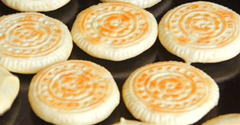News
Cooking up a cultural treat
Updated:2024-09-02 13:40( (China Daily))
Festival celebrates dough's rich and varied history, showing it is more than just daily nourishment.
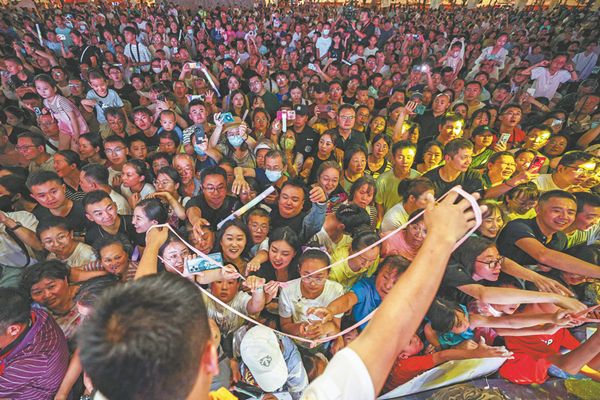
The audience seems entranced by noodle-stretching techniques during a festival to promote dough art heritage in Taiyuan, Shanxi province. HU YUANJIA/FOR CHINA DAILY
In China, dough is not just nourishment for the body but also a vehicle for millennia of culture and knowledge. Dishes made of dough, though ordinary and familiar to Chinese, are listed as a national intangible cultural heritage.
During China's Intangible Cultural Heritage Wheaten Food Carnival in Taiyuan, North China's Shanxi province, visitors could explore the richness of dough culture.
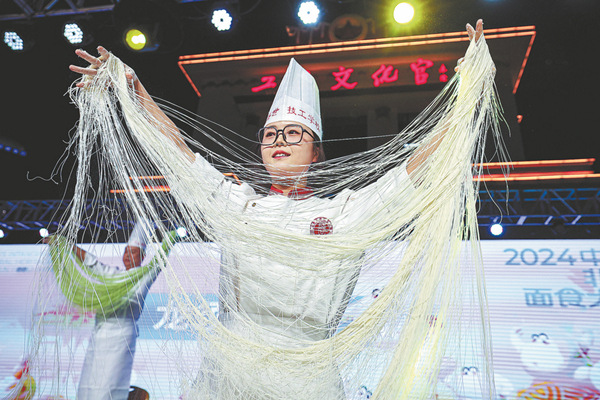
The thin delicacy of longxumian (dragon beard noodle) is demonstrated. HU YUANJIA/FOR CHINA DAILY
This included displays of traditional dough-making techniques, exhibitions of noodle and bun artistry, and a week-long celebration of intangible heritage cuisine from various regions around the country.
Through the mist from steaming pots, 106 varieties of intangible cultural heritage food made of dough represented the culinary legacy at the festival, which kicked off on Aug 23.
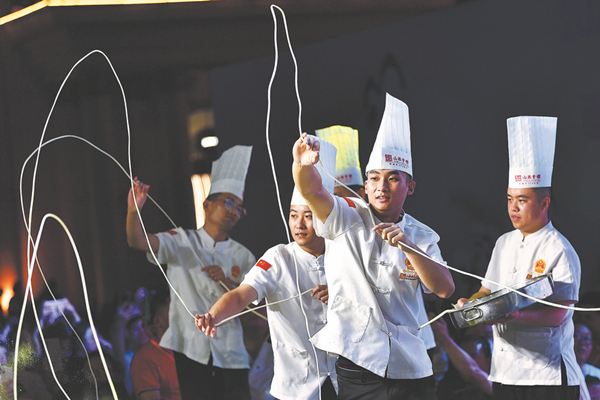
The thin delicacy of longxumian (dragon beard noodle) is demonstrated. HU YUANJIA/FOR CHINA DAILY
With nimble fingers kneading, twisting and shaping the dough, chefs demonstrated the art with unparalleled skill, captivating the audience.
One of the highlights of the festival is the spectacle of pulling dough into 4,096 strips, called longxumian (dragon beard noodle). The technique of producing the hair-thin noodles has been included on the second list of national intangible cultural heritage in China.
Popular in the northern part of China for more than 300 years, dragon beard noodles have become a popular snack. It is said that during the Ming Dynasty (1368-1644), there was a royal chef who invented a very thin noodle, which pleased the emperor as it stimulated his appetite.
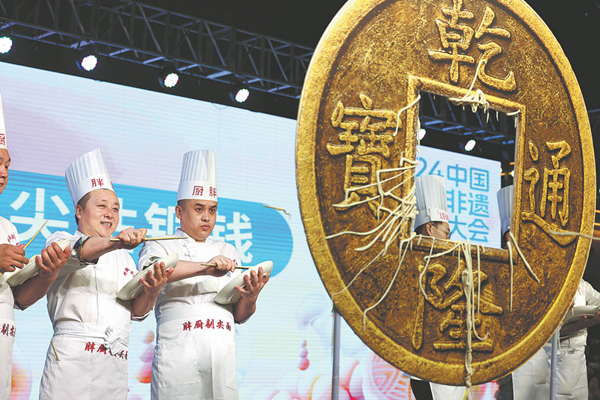
Chefs throw tijian (scraps) through a coin hole. ZHU XINGXIN/CHINA DAILY
At the festival, audiences can have a taste and try their hand of making these examples of culinary heritage and explore the stories behind them. Besides presenting the essence of dough artistry, the event has also invited visitors on a culinary journey through flavors.
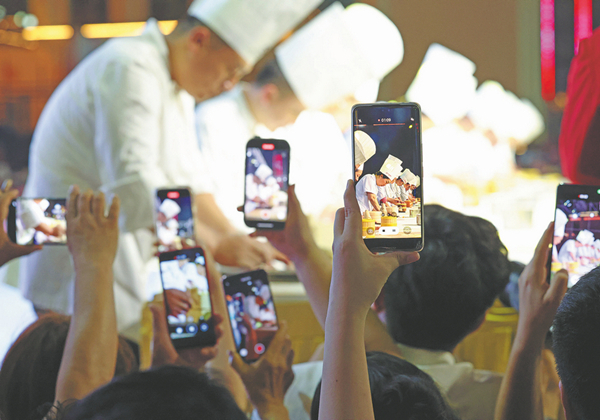
Using smartphones, visitors record chefs making noodle dishes on stage. ZHU XINGXIN/CHINA DAILY
Meanwhile, a dough art exhibition in Taiyuan showcases 300 delicately crafted dough sculptures. Running through to Sept 8, it has five themed sections, including the 24 solar terms, the 12 zodiac animals and important moments in life. The 2.5-meter-tall giant huamo (decorated steamed bun) is the largest item of the exhibition, and features dragons soaring above colorful flowers to the sky.
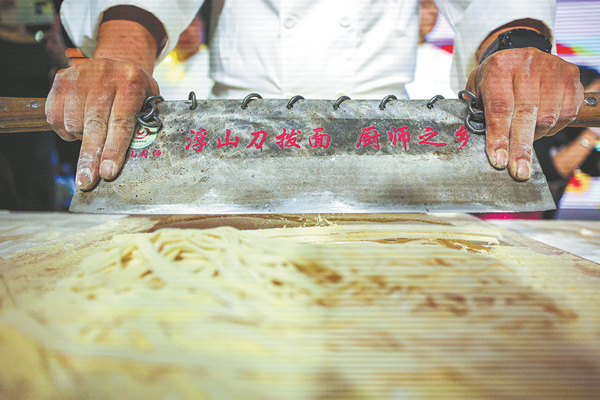
A sharp long knife is handy for slicing noodles. HU YUANJIA/FOR CHINA DAILY
A series of activities not only celebrate culinary artistry but also foster with cultural exchange, bridging the past with the present and preserving the essence of China's dough heritage.
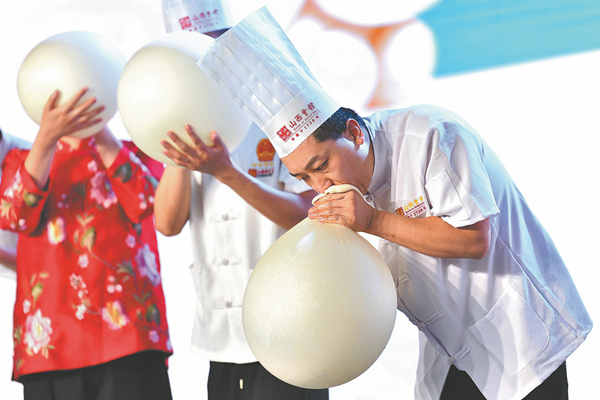
Dough is inflated like festive balloons on stage. WEI LIANG/FOR CHINA DAILY

